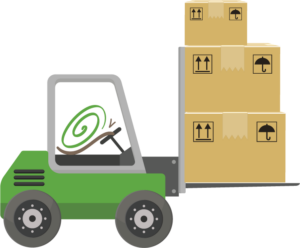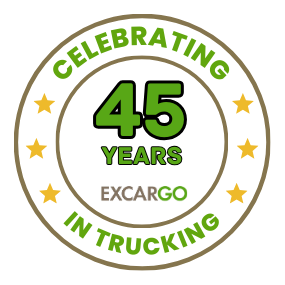What is Transloading and Why do it? When does it fit?

Transloading is the process of unloading freight from one mode of transportation to another as a shipment moves through the supply chain. This is often a required step in the shipping process. However, transloading can also be used to reduce storage costs, speed up delivery times, and free up chassis, avoid port demurrage or per diem, reduce fuel surcharge or expense, lower overall landed cost when temporary delays caused by congestion and supply chain constraints prevent delivery.
When an import container is transloaded, it usually occurs at a facility that is close to a port terminal. A container will be taken into a facility and transferred to a domestic container or truckload. The reverse is true for exports
With the complexities of freight shipping in normal times, businesses are always looking for solutions to get their goods transported faster, more efficiently and at a reasonable rate. During trying times, those same companies need more creative methods to get the same job done. That’s why more and more freight customers are looking toward transloading to help complete this crucial part of the supply chain. But for those who are in the dark, they might ask what transloading is and how it can actually make a positive difference? Or, what is the difference between cross dock and transload?
Some use the words cross dock and transload interchangeably. We tend to think of cross dock as an immediate transfer of two side by side units. And, a transload could have more time or handling. In any case, the speedy movement of cargo is how the money is made and any extra time costs avoidable expense in storage, chassis, per diem. This is where transloading saves money!
Transloading was associated with overweight international containers until the recent supply chain disruption. Before dense commodities, like tile, beer, seafood, etc. were loaded wall to wall, exceeding US FMCSA allowable weights and some warehouses unloaded the excess weight, legalizing domestic transportation portion. That was when things moved according to schedules and expectations. Now, it takes more ingenuity to have a successful supply chain.
Here are some examples or, reasons to transload:
- An import load arrives at a port and there are no chassis available to quickly deliver, or
- An export load is planned for a vessel arrival that is delayed for several weeks. If the cargo were held in a warehouse and later transloaded to the container, the total cost is much less, or
- There is no prompt service to the final destination or the final destination or no appointments or room for the cargo anytime soon or, due to congestion at the receiver or shipper, or
- The final destination or point of origin is over 200 miles from the port so a roundtrip dray rate plus fuel and chassis fees and the risk of driver layover (due to hours of service limits) result in an onerous overall cost. Or
- Now, if the cargo is floor loaded, that just adds valuable time to load and or unload on each trailer or container,or
- Or, if the cargo is loaded such it has to be down stacked to fit in racking systems, more labor cost, more hours of service risk.
What is this hours of service issue?
That is the total number of hours drivers can be active before they have to stop. Every minute counts under the law that was passed in June 2020 detailed here:
https://www.fmcsa.dot.gov/regulations/hours-service/summary-hours-service-regulations
So this new law has also increased the value of transloading. Many city pairs like Houston to Austin, Houston to San Antonio and Houston to Dallas have become transload points since we often cannot turn the roundtrip in 11 hours.
Trucking companies and drivers both suffer penalties if hours of service violations happen.
Diesel has become a major factor, too. With fuel in excess of $5 per gallon, it is often cheaper to pay a local dray and a one way van plus fuel.
We actually started transloading when diesel was high in 2007, this not only gave our customers immediate transportation savings but they creatively found way to run a more efficient warehouse and redirect resources. They will never go back to direct delivery due to the operational costs savings they enjoy.
What are some down sides of transloading?
Damage and the loss of control can be greater than a customer wants. Careful handling and good protocols avoid that. Plus making sure you pick a good transload partner and are explicit about expectations will assure good results.


Stay Connected with Us!
Corporate Address
2080 Genoa Red Bluff Rd, Houston, TX 77034
Warehouse Facility
4300 Malone Dr, STE 100, Pasadena, TX 77507
Yard Facility
9888 Wallisville Rd, Houston, TX 77013







